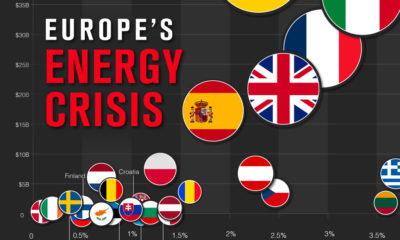Becoming Big Oil: How the 10 Largest Oil Companies Were Born
The size and scope of Big Oil is truly mind-boggling. For example, Chinese government-owned Sinopec, the world’s largest oil company by 2014 revenues, employs 358,571 people and brought in a whopping $455 billion in revenue last year. Royal Dutch Shell is no slouch, either. The world’s third largest oil company generated $422 billion in revenue in 2014 and is the U.S. market leader in gas stations with 25,000. Collectively, the numbers from the world’s 10 biggest oil companies are even more impressive. Worldwide, they generated $3.26 trillion in revenue in 2014, which is more than the entire GDP of the United Kingdom. The combined daily oil production of these same companies is 40 million barrels of oil, enough to fill 2,543 Olympic-sized swimming pools. Big Oil has more behemoth companies than all other industries combined. Even with the recent decline in oil prices, half of Fortune’s 10 Largest Companies list is composed of oil conglomerates. The Swiss commodity giant Glencore, one of the “other” five companies on the list, also makes a significant portion of revenue from trading oil. The question is: how did these companies get so big? Today’s infographic, from drill rig supplier Rigsource, tries to answer this question. Looking at a century of mergers and acquisitions, it becomes clear that these companies were not always giants. They became their current size through various mergers and acquisitions that happened over the course of the last century, and it is these economies of scale that has allowed them to generate the kind of revenue they do today.
on
#1: High Reliability
Nuclear power plants run 24/7 and are the most reliable source of sustainable energy. Nuclear electricity generation remains steady around the clock throughout the day, week, and year. Meanwhile, daily solar generation peaks in the afternoon when electricity demand is usually lower, and wind generation depends on wind speeds.As the use of variable solar and wind power increases globally, nuclear offers a stable and reliable backbone for a clean electricity grid.
#2: Clean Electricity
Nuclear reactors use fission to generate electricity without any greenhouse gas (GHG) emissions.Consequently, nuclear power is the cleanest energy source on a lifecycle basis, measured in CO2-equivalent emissions per gigawatt-hour (GWh) of electricity produced by a power plant over its lifetime. The lifecycle emissions from a typical nuclear power plant are 273 times lower than coal and 163 times lower than natural gas. Furthermore, nuclear is relatively less resource-intensive, allowing for lower supply chain emissions than wind and solar plants.
#3: Stable Affordability
Although nuclear plants can be expensive to build, they are cost-competitive in the long run. Most nuclear plants have an initial lifetime of around 40 years, after which they can continue operating with approved lifetime extensions. Nuclear plants with lifetime extensions are the cheapest sources of electricity in the United States, and 88 of the country’s 92 reactors have received approvals for 20-year extensions. Additionally, according to the World Nuclear Association, nuclear plants are relatively less susceptible to fuel price volatility than natural gas plants, allowing for stable costs of electricity generation.
#4: Energy Efficiency
Nuclear’s high energy return on investment (EROI) exemplifies its exceptional efficiency. EROI measures how many units of energy are returned for every unit invested in building and running a power plant, over its lifetime. According to a 2018 study by Weissbach et al., nuclear’s EROI is 75 units, making it the most efficient energy source by some distance, with hydropower ranking second at 35 units.
#5: Sustainable Innovation
New, advanced reactor designs are bypassing many of the difficulties faced by traditional nuclear plants, making nuclear power more accessible.
Small Modular Reactors (SMRs) are much smaller than conventional reactors and are modular—meaning that their components can be transported and assembled in different locations. Microreactors are smaller than SMRs and are designed to provide electricity in remote and small market areas. They can also serve as backup power sources during emergencies.
These reactor designs offer several advantages, including lower initial capital costs, portability, and increased scalability.
A Nuclear-Powered Future
Nuclear power is making a remarkable comeback as countries work to achieve climate goals and ultimately, a state of energy utopia. Besides the 423 reactors in operation worldwide, another 56 reactors are under construction, and at least 69 more are planned for construction. Some nations, like Japan, have also reversed their attitudes toward nuclear power, embracing it as a clean and reliable energy source for the future. CanAlaska is a leading exploration company in the Athabasca Basin, the Earth’s richest uranium depository. Click here to learn more now. In part 3 of the Road to Energy Utopia series, we explore the unique properties of uranium, the fuel that powers nuclear reactors.






























